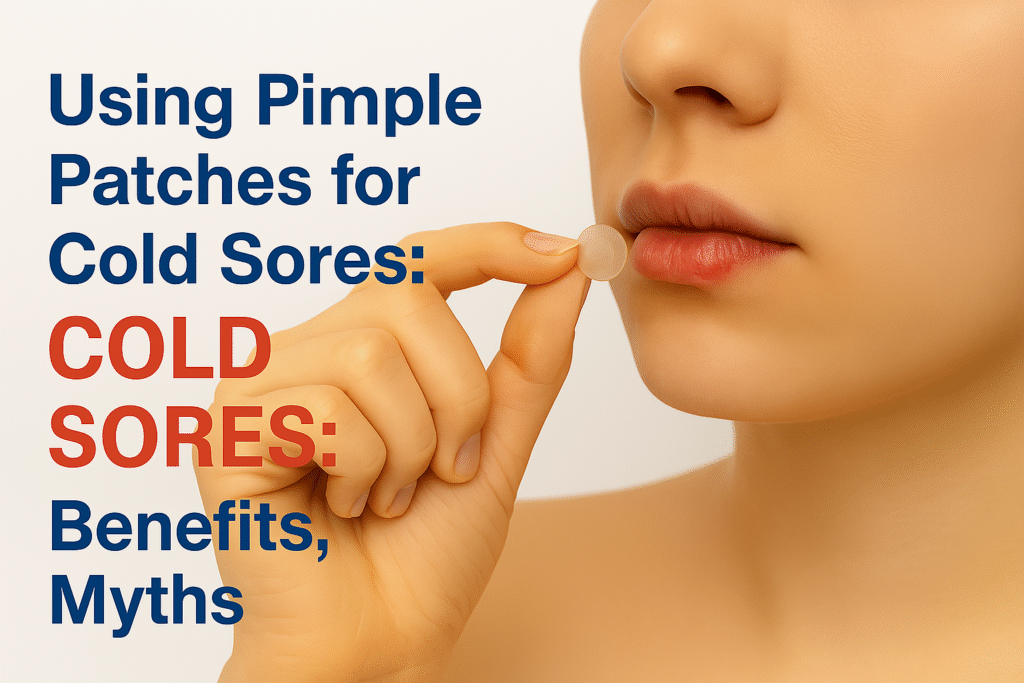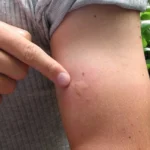
Using Pimple Patches for Cold Sores: Benefits, Myths & FAQs
1. Introduction: Pimple Patch on Cold Sore
Cold sores—also known as fever blisters—are a common nuisance caused by the herpes simplex virus (HSV-1). They appear as small, fluid-filled blisters, often around the lips or mouth, and can be both painful and highly contagious. While pimple patches are typically marketed for acne (pimples or zits), many people are tempted to try them on cold sores for their supposed healing and concealing power. But can you use a pimple patch on a cold sore? Does it work, or is it just a myth sparked by social media?
This guide will clarify how both cold sores and pimple patches work, examine popular claims, and help you decide if making the switch is worth your time and your skin’s health.
2. Can You Use Pimple Patch on Cold Sore?
In short, yes—you can physically apply a pimple patch to a cold sore. But the real question: should you?
How Pimple Patches Work
- Material: Most are hydrocolloid dressings, designed to absorb pus and fluid from acne lesions, keeping them moist and shielded from bacteria.
- Purpose: They speed up acne healing and reduce picking by creating a protective barrier.
- Active ingredients: Some patches add salicylic acid, tea tree oil, or even microneedle technology. These target acne-specific bacteria & inflammation.
Are Cold Sores and Pimples the Same?
- Cold sores stem from a viral infection (herpes simplex type 1), not bacteria. They require antivirals to treat the underlying cause.
- Pimples are inflamed pores or hair follicles, usually related to oil, clogged skin, and acne bacteria.
- Cold sores can resemble pimples at first, leading to confusion. But the biology—and optimal treatment—differs entirely.
Key Takeaway: Pimple patches are safe for acne, but not designed to target viruses.
Can You Use a Pimple Patch on a Cold Sore?
3. Will a Pimple Patch Help a Cold Sore?
The benefits are mixed at best. Here’s what typically happens if you try it:
- Best-case scenario: The pimple patch acts as a shield to reduce picking/touching, minimizing spread.
- No viral action: No hydrocolloid patch or anti-acne ingredient can inactivate herpes virus or shorten the outbreak.
- Possible irritation: Active ingredients (tea tree oil, salicylic acid) may sting or worsen the sensitive skin around a cold sore.
- Needs more research: There’s little scientific study (as of 2025) showing pimple patches help cold sores heal faster, if at all.
Dermatologist insight: “Hydrocolloid patches are not medically harmful for cold sores, but they don’t heal the viral infection or prevent transmission. Antivirals remain the gold standard.”
Will a Pimple Patch Help a Cold Sore?
4. Do Pimple Patches Work on Cold Sores?
If your goal is less picking and a bit of camouflage, yes—but otherwise, there are no proven antiviral effects. Reviews online are largely anecdotal, usually describing:
- Some reduction in embarrassment/social anxiety (camouflage effect)
- Occasional discomfort or a feeling the patch worsened irritation
- No reduction in healing time compared to topical antivirals
User Experience Snippets
“I used a hydrocolloid patch when my cold sore burst, just to keep it covered. It protected from sun and dirt, but didn’t heal it faster.”
“Tea tree patches stung like crazy and I had to take it off within hours. I’ll stick to acyclovir next time.”
“Pimple patches made me feel less self-conscious in public, but my doctor said not to rely on them for actual treatment.”
Do Pimple Patches Work on Cold Sores?
5. Pimple Patch on Cold Sore: Myths & Misconceptions
- Myth #1: “If it works for zits, it works for blisters.” Not true: Viruses require different medical approaches.
- Myth #2: “Hydrocolloid patches ‘suck out’ the cold sore.” False: They only absorb fluid; the virus remains unaffected.
- Myth #3: “Medicated patches make cold sores go away.” False: Active ingredients like salicylic acid are for acne bacteria, not HSV-1.
Truths:
- Pimple patches offer some protection from touching/picking.
- If you are allergic or overly sensitive to patch adhesives or ingredients, avoid experimenting on cold sores.
- Apply to clean, dry skin, and never use the patch on open, weeping blisters without consulting a professional.
6. Alternatives: What Actually Works for Cold Sores
| Treatment | Mechanism | Effectiveness | Best Used When |
|---|---|---|---|
| Pimple Patch | Physical barrier, absorbs fluid | Camouflage, reduces picking only | Mild blisters (for social comfort) |
| Docosanol (Abreva) | FDA-approved, blocks virus entry | Shortens healing by 1-2 days if used at tingle phase | At first sign (tingle/itch) |
| Acyclovir/Valacyclovir (Rx creams or pills) | Antiviral, inhibits virus replication | Most effective at reducing outbreak severity/duration | Prescription, recurrent outbreaks |
| Hydrogen Peroxide, Alcohol | Disinfects, dries out sore | Not recommended (may delay healing) | Discouraged by dermatologists |
| Natural oils, Tea tree, Lemon balm | Anti-inflammatory, anecdotal use | Limited evidence, may soothe but not heal | Complementary, not substitutes |
Key learning: If you want relief and faster healing, stick with antiviral creams or pills for maximum effect—especially if you get cold sores often or have severe symptoms.
7. Expert & Dermatologist FAQs
8. Conclusion: Should You Try It?
If you’re hoping for a cute, quick fix: pimple patches can disguise, but not heal, cold sores. For best results, prioritize doctor-recommended antiviral treatments. Use a patch if you feel more comfortable or want to shield your sore in public—but don’t expect rapid healing, and stop if you notice burning or irritation.
